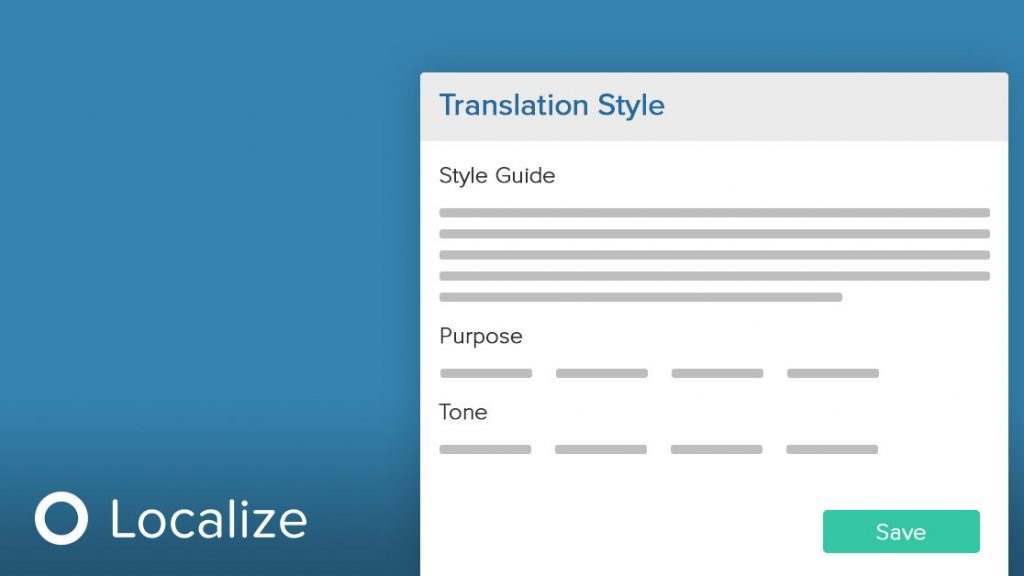If you want to keep your brand voice consistent in different languages, a localization style guide is essential.
What’s a Localization Style Guide?
A style guide provides guidelines for translators when they adapt your content for different languages during the localization process. These guidelines include the tone of the translation, word choice, formatting, brand voice, writing style, and more.
A style guide should be unique to your company and aligned to your brand identity. A law firm, for example, might use formal language and perfect grammar. A site trendy casual clothing retailer might go for a more laid-back feel with casual language and style.
Top 6 Style Guide Benefits
An effective style guide can improve translation and localization projects in a few significant ways. Let’s explore the top 6 advantages of building a set of guidelines for your translators.
1. Better translation quality
A localization style guide lays the groundwork for how content needs to be translated. With good context, translators can produce better-quality translations. Style guides help maintain high standards for your content, regardless of the target language.
2. Higher user engagement
Research shows that most people prefer to interact with websites in their native language. By translating your website, you’re helping your brand get noticed by a new target audience. When you use a style guide to convey the brand’s message, you’re more likely to hold the attention of potential customers. A well-translated page that is interesting and engaging keeps visitors on the site for longer.
3. Increased sales
Most consumers prefer to buy products from brands that use their native language. The more people are aware of the brand, the more they talk about it, causing even more interest and awareness. As your international presence grows, you’ll get more sales from this new audience.
4. Faster, cost-effective localization
Instead of starting from scratch each time you decide to introduce a new language, a style guide lays the groundwork for a translation project. This helps your translation agency or LSP get right to work without a lot of hands-on training. Better collaboration saves time and money in the localization process.
5. Improved consistency and quality in translations
Localization style guides maintain consistency across your entire global presence. Regardless of what language a customer accesses your website in, they should be able to identify with your brand right away.
6. Easier collaboration
Translation projects often involve a lot of people in different countries and time zones. A style guide sets clear expectations and brand standards to help everyone work together more effectively. Without a clear style guide, writers and translators tend to apply their own standards, resulting in a lot of variations and inconsistencies.
What to Include in a Translation Style Guide
A style guide streamlines your company’s writing and translation standards. So, let’s explore the key components of a helpful style guide.
Audience Information
You should share pertinent audience information with your translator or LSP, including the demographics of your target market. This helps translators understand who they’re writing for. For example, if you use American slang in your source text, an older demographic in a local market might not understand it.
Brand Identity and Tone
Your brand’s tone of voice guidelines indicate how you want to communicate to your audience. An authentic and distinctive voice will set you apart from the competition. On a very basic level, your brand voice guidelines should set out how formal or conversational you want to appear, and what you want your writing to sound like. Be sure to include branded content as a reference, like your logos, preferred fonts, and brand messaging.
Guidelines for Different Locales
If you create content for multiple markets, you’ll need a style guide for each language and locale. Each language has unique rules, and words in your lexicon that work well in English could send the wrong message when translated. Your style guides need to be localized by people who have high writing standards in the target language. They also need to be very familiar with the local culture and understand your brand voice.
Grammar and Formatting
Your company’s grammar preferences should be recorded in a style guide. Whether you opt to make a firm stand against the use of exclamation marks or embrace the Oxford comma, your choices should be made clear to every translator. Your style guide should also address the formatting, capitalization, and vocabulary that you would like to be adopted in your written materials.
Glossary
A translation glossary is a list of terms and definitions for a localization project. Every company develops its own set of acronyms, abbreviations, and jargon. However, insider language may alienate your audience. Your glossary should include guidance on when it’s acceptable to use acronyms or jargon. You can even choose to adopt a strict no acronym or jargon policy. Create a glossary to ensure that your company’s unique terminology will be translated accurately throughout your entire project.
Names and Numbers
You can capture most business-related content in your glossary, but other names and numbers can be tricky. For example, you should decide how you want to translate place names. The spelling of place names varies depending on the locale, like Mexico vs. México or Cologne vs. Köln.
Numbers are also important when you make reference materials for your translators. Think about how you want to localize date and time formats, units of measure, number formatting, and currency standards.
Build a Style Guide with Localize
After you create your style guide, you should save it in your translation management system (TMS). A TMS like Localize can save your brand standards in the cloud so you can share them with your whole team. Plus, your translators can receive alerts if a sentence they’ve written doesn’t comply with your guidelines.
Localize is an innovative TMS that can host your brand’s style guide to ensure high-quality translations every time. Contact Localize to find out how we can make the translation process faster, easier, and more accurate.







